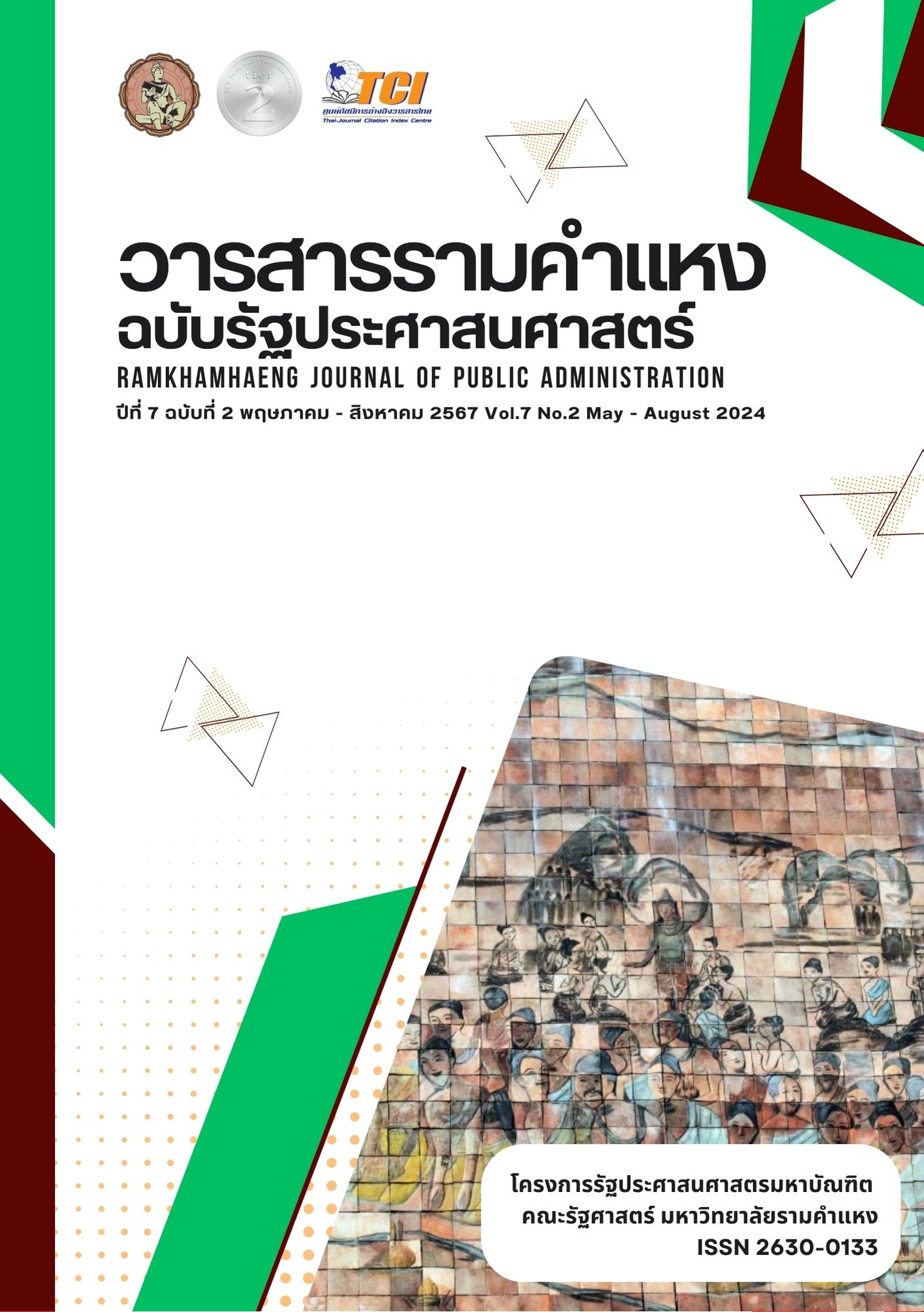The pre- and post-COVID-19 empirical analysis of stocks returns, inflation and output in Thailand
คำสำคัญ:
stock returns, Inflation, output, Fama’s hypothesis, COVID-19บทคัดย่อ
This research aims to examine the relationship between stock returns, inflation, and output in Thailand, investigate the inverse relationship between Thailand’s real output and inflation, and analyze the positive relationship between Thailand's stock returns and real output. The research investigates the Fisher Hypothesis puzzle and revisits Fama's Hypothesis, exploring the dynamics between these macroeconomic variables and stock returns in an emerging market context. Utilizing data sourced from CEIC spanning from January 2015 to December 2023, encompassing both pre- and post-COVID-19 periods, the study employs least squares regression and ARMA maximum likelihood estimation techniques for analysis. Inflation generally increases the prices of goods and services, resulting in higher production costs, which can lower output. However, stock prices often reflect firms’ performance or output growth. The findings reveal a significant negative relationship between output growth and inflation in Thailand. Additionally, the study finds no significant relationship between real stock returns and output growth; instead, real stock returns are primarily influenced by their past values. Consequently, shareholders do not necessarily benefit from economic growth alone and should diversify their investment strategies beyond countries with high growth rates. These insights provide valuable guidance for investors navigating economic uncertainties and optimizing investment decisions in emerging markets.
เอกสารอ้างอิง
Adams, G., McQueen, G., & Wood, R. (2004). The effects of inflation news on high frequency stock returns. The Journal of Business, 77(3), 547-574.
Alagidede, P., & Panagiotidis, T. (2012). Stock returns and inflation: Evidence from quantile regressions. Economics letters, 117(1), 283-286.
Antonakakis, N., Gupta, R., & Tiwari, A. K. (2016). Time-varying correlations between inflation and stock prices in the United States over the last two centuries. Retrieved from https://econpapers.repec.org/paper/prewpaper/201605.htm
Binici, M., Centorrino, S., Cevik, M. S., & Gwon, G. (2022). Here Comes the Change: The Role of Global and Domestic Factors in Post-Pandemic Inflation in Europe: International Monetary Fund.
Chandrashekar, R., Sakthivel, P., Sampath, T., & CHITTEDI, K. R. (2018). Macroeconomic variables and stock prices in emerging economies: A panel analysis. Theoretical & Applied Economics, 25(3).
Chang, H.-F. (2013). Are ‘stock returns’a hedge against inflation in Japan? Determination using ADL bounds testing. Applied Economics Letters, 20(14), 1305-1309.
Chatrath, A., Ramchander, S., & Song, F. (1996). Stock prices, inflation and output: Evidence from India. Journal of Asian Economics, 7(2), 237-245.
Cifter, A. (2015). Stock returns, inflation, and real activity in developing countries: A Markov-switching approach. Panoeconomicus, 62(1), 55-76.
Durai, S. R. S., & Bhaduri, S. N. (2009). Stock prices, inflation and output: Evidence from wavelet analysis. Economic Modelling, 26(5), 1089-1092.
Fama, E. F. (1981). Stock returns, real activity, inflation, and money. The American economic review, 71(4), 545-565.
Fichtner, F., & Joebges, H. (2024). Stock market returns and GDP growth. Retrieved from https://www.econstor.eu/handle/10419/283065
Fisher, I. (1930). The theory of interest. New York, 43, 1-19.
Hasan, M. S. (2008). Stock returns, inflation and interest rates in the United Kingdom. The European Journal of Finance, 14(8), 687-699.
Jelilov, G., Iorember, P. T., Usman, O., & Yua, P. M. (2020). Testing the nexus between stock market returns and inflation in Nigeria: Does the effect of COVID‐19 pandemic matter? Journal of Public Affairs, 20(4), e2289.
Johnston, J., & DiNardo, J. (1987). Econometric Methods. p188-90. In: McGraw-Hill Press.
Lee, B. S. (2010). Stock returns and inflation revisited: An evaluation of the inflation illusion hypothesis. Journal of Banking & Finance, 34(6), 1257-1273.
Li, L., Narayan, P. K., & Zheng, X. (2010). An analysis of inflation and stock returns for the UK. Journal of International Financial Markets, Institutions and Money, 20(5), 519-532.
Madsen, J. B., Dzhumashev, R., & Yao, H. (2013). Stock returns and economic growth. Applied Economics, 45(10), 1257-1271.
Raghutla, C., Sampath, T., & Vadivel, A. (2020). Stock prices, inflation, and output in India: An empirical analysis. Journal of Public Affairs, 20(3), e2052.
SAMPATH, T. (2018). Financial development, trade openness and growth in India. The distinctivities of the complexity 3, 25(1), 113.
Suwannapak, S., & Chancharat, S. (2022). Stock Market Volatility Response to COVID-19: Evidence from Thailand. Journal of Risk and Financial Management, 15(12), 592.
Tiwari, A. K., Dar, A. B., Bhanja, N., Arouri, M., & Teulon, F. (2015). Stock returns and inflation in Pakistan. Economic Modelling, 47, 23-31.
Tripathi, V., & Kumar, A. (2014). Relationship between Inflation and stock returns–evidence from BRICS markets using Panel Co integration Test. International Journal of Accounting and financial reporting, 4(2), 647-658.
ดาวน์โหลด
เผยแพร่แล้ว
รูปแบบการอ้างอิง
ฉบับ
ประเภทบทความ
หมวดหมู่
สัญญาอนุญาต
ลิขสิทธิ์ (c) 2024 Saranyaa Niemchai, Nonthaporn Seehapan, Kajakorn Chomaitong, Pao Jampangoen, Nattawut Hantrakul

อนุญาตภายใต้เงื่อนไข Creative Commons Attribution-NonCommercial-NoDerivatives 4.0 International License.



